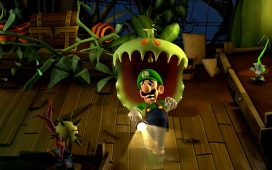Having done so many things unimaginably better than so many other movie franchises, it’s fitting that the Toy Story series now gives us a classier, superior kind of anticlimax.
Compared to many fourquels we’ve had in the past – Jaws IV: The Revenge; Superman IV: The Quest for Peace; Police Academy 4: Citizens on Patrol – Toy Story 4 is in a different league. And if you’d never seen any other of the Toy Stories, you’d probably think this one – written by Pixar veteran Andrew Stanton with Stephany Folsom and directed by Josh Cooley – was a gem. It is sprightly, sweet-natured and gorgeous to look at (and how blase we’ve all become about animation standards that 10 years ago had us hyperventilating with astonishment). There are some nice lines and a nifty allusion to Hitchcock’s Strangers on a Train. But this movie is fundamentally repeating itself: repeating characters, ideas and plotlines – even if it does it with buoyancy and charm.
The last two Toy Stories heartwrenchingly tackled the idea of obsolescence. How do toys feel when they are not wanted any more, and get thrown away? Before I became a father myself, I naively thought these themes reflected the child’s fear of abandonment by the parents. After my son was born, the truth hit me like a blinding light: it is the opposite way around. It is the parents who fear that moment when their child doesn’t want to play with them any more. In Toy Story 3, Woody, Buzz and the gang are shipped off to a community centre that is chillingly like an old folks home and is run by abusive inmates; there is redemption when they are given to a new kid called Bonnie.
And basically Toy Story 4 starts the same story all over again. Same deal, new kid, though a flashback adroitly stitches a new backstory into the drama: there is some history between Woody and a certain other member of the cast. And we also meet a new toy: when Bonnie has to go off for her first day in nursery school, Woody sneaks into her backpack to keep an eye on her, and witnesses little Bonnie make a crude toy out of a plastic fork that she calls “Forky” and brings home. Inevitably, poor Forky (voiced by Tony Hale) gets lost in a certain antique store when the family goes on a road trip, and Woody and the gang have to rescue him. They encounter new characters: a creepy doll called Gabby Gabby (Christina Hendricks) with sinister assistants and shades of the terrifying Lots-o’-Huggin Bear in Toy Story 3. There is a funny new duo, Bunny and Duckie (Jordan Peele and Keegan-Michael Key) and a very amusing Canadian stunt motorbike rider, Duke Caboom (Keanu Reeves).
Forky is potentially a very interesting character. All the other toys are created by corporations, but what happens when a toy is actually made by the kid? Is there a primeval, even incestuous link between creator and created? Well, no, not really. However unevolved, Forky plays by the same rules as everyone else.

It is absurd to start complaining about implausibility in a film about magic toys, but for the first time I sensed a kind of evasion or even dishonesty in the Toy Story franchise. For this fourth film, they have decided to hit the reset button and simply restart the situation with a new kid – not Andy but Bonnie. Fine. But after more than a decade’s worth of use, these toys should be grimy and falling to pieces. Their actual demise as objects would be a real issue. Yet Woody et al look as fresh as daisies; as fresh as new toys. It is ridiculous to worry about this, of course, and yet Toy Story 2 was specifically about how toys might want to achieve immortality as collectables, the Faustian bargain of preserving their pristine quality under cellophane at the cost of not getting real, hands-on love from kids. Their mortality as objects was a real issue that has been sidestepped here.
Toy Story 4 also joins the X-Men and the Men In Black in trying to achieve a bit more gender balance, and this is something it does with artless persuasiveness and an implication that it isn’t just the kids who are growing up, it’s the toys themselves. I’m happy to see it happen. Toy Story 4 isn’t at all bad. But it’s time to let go.














